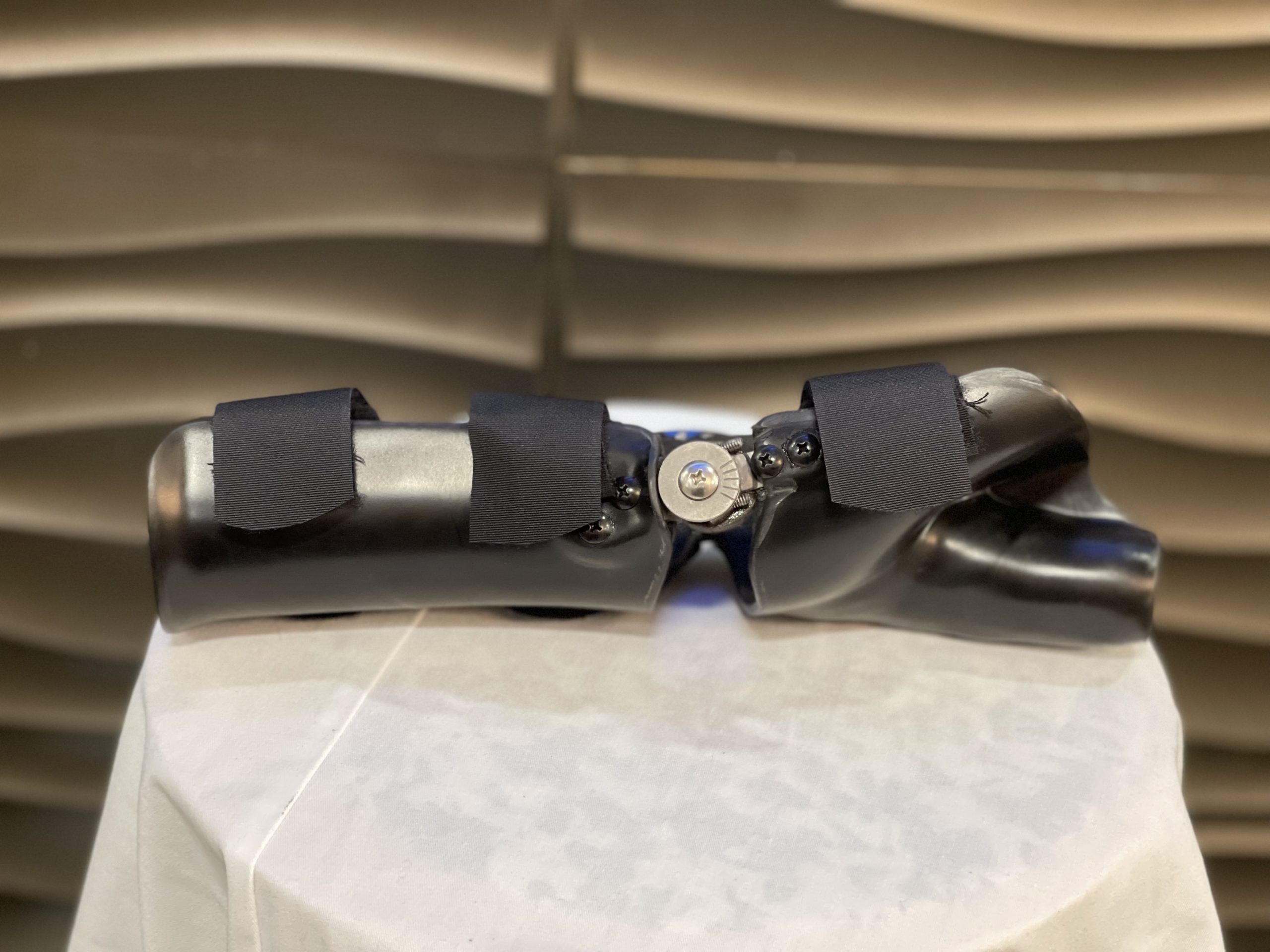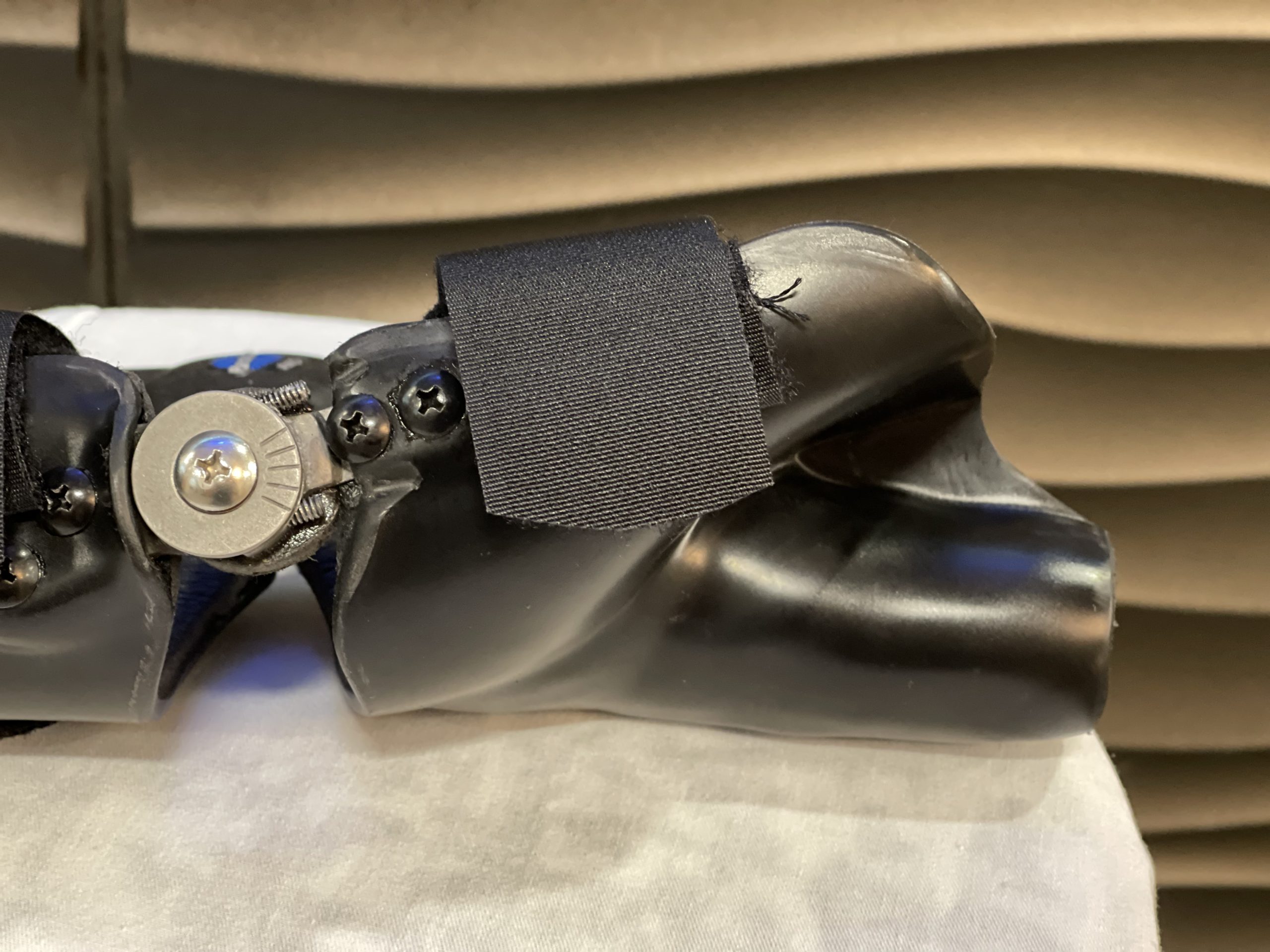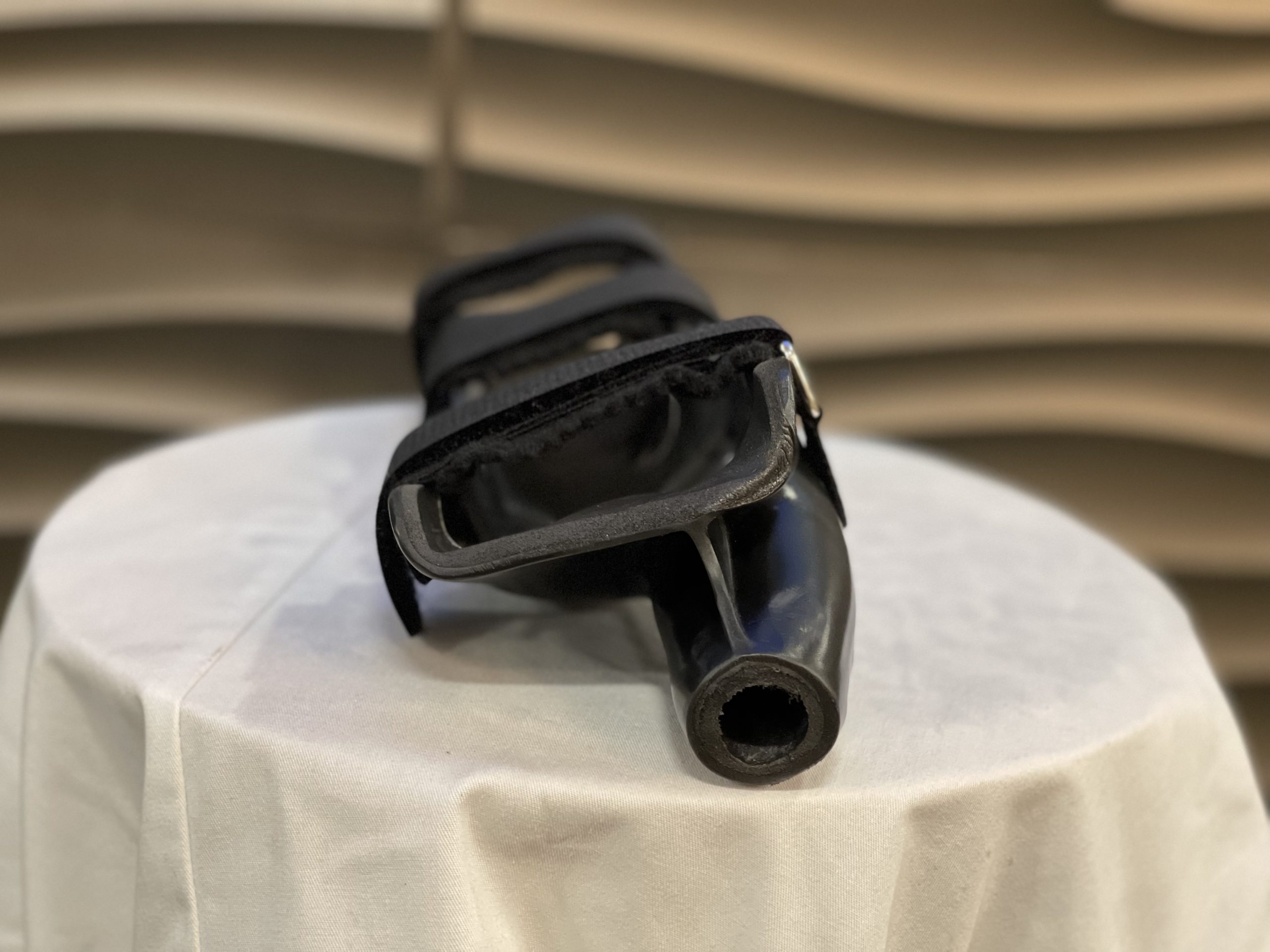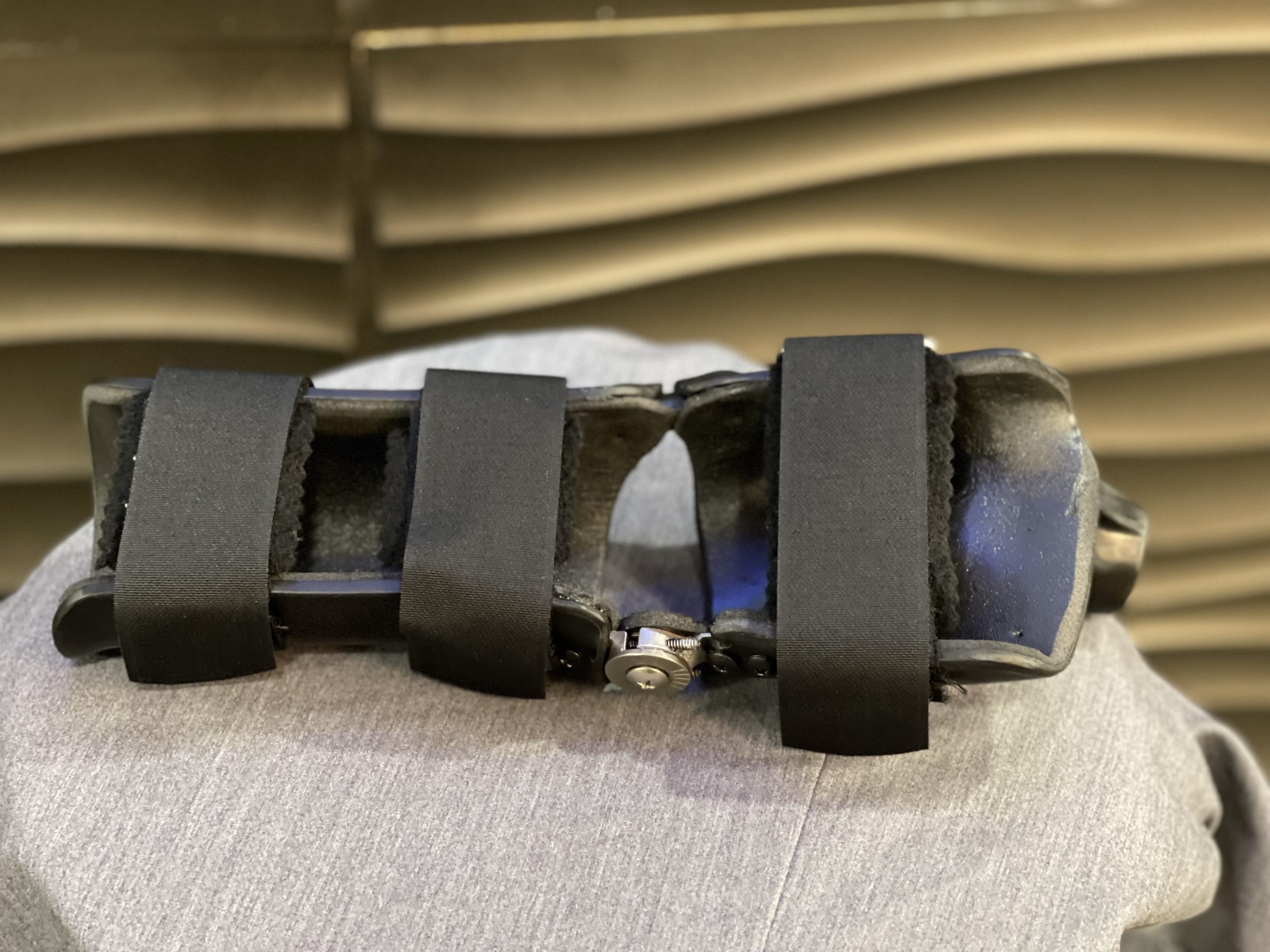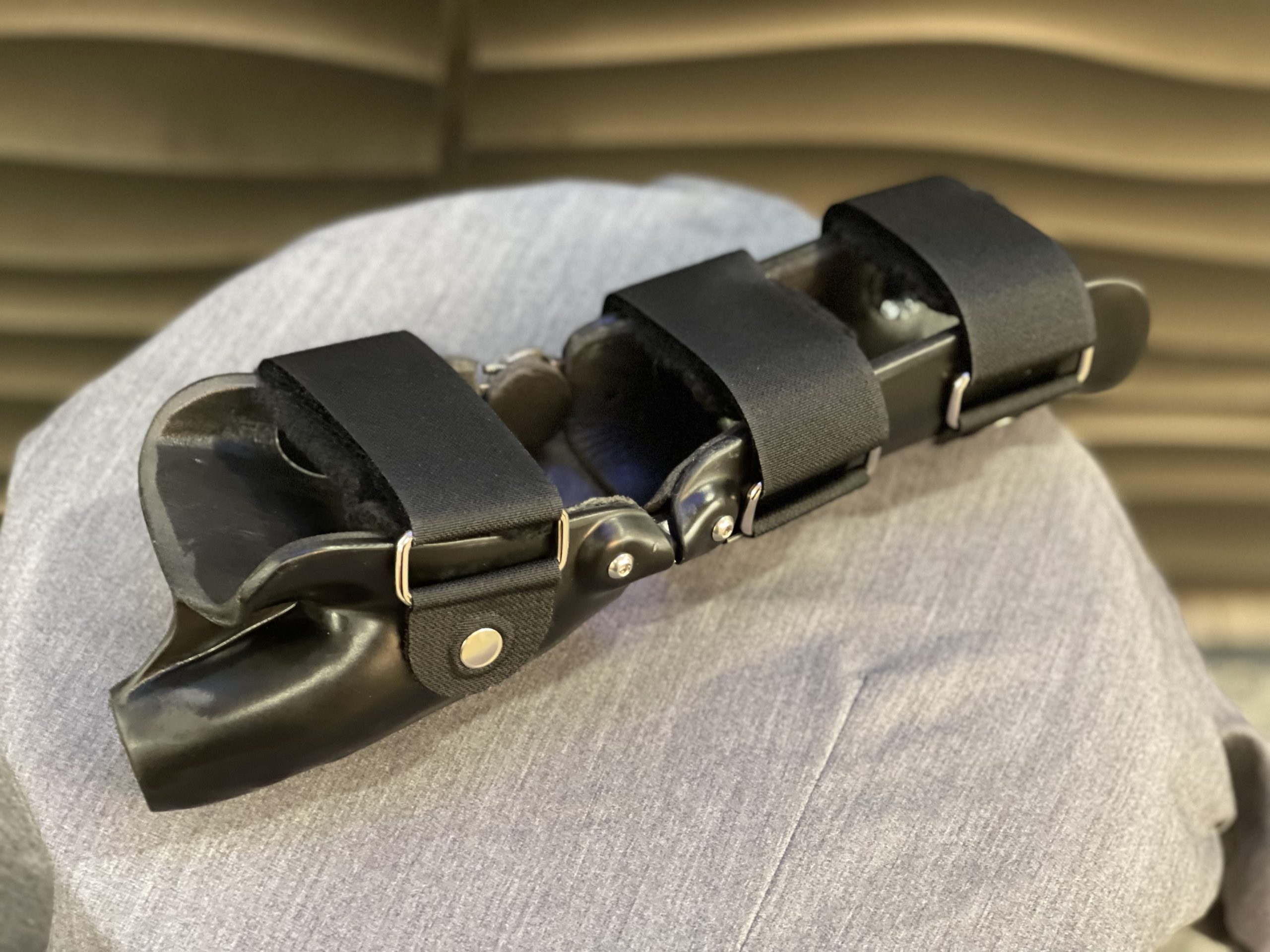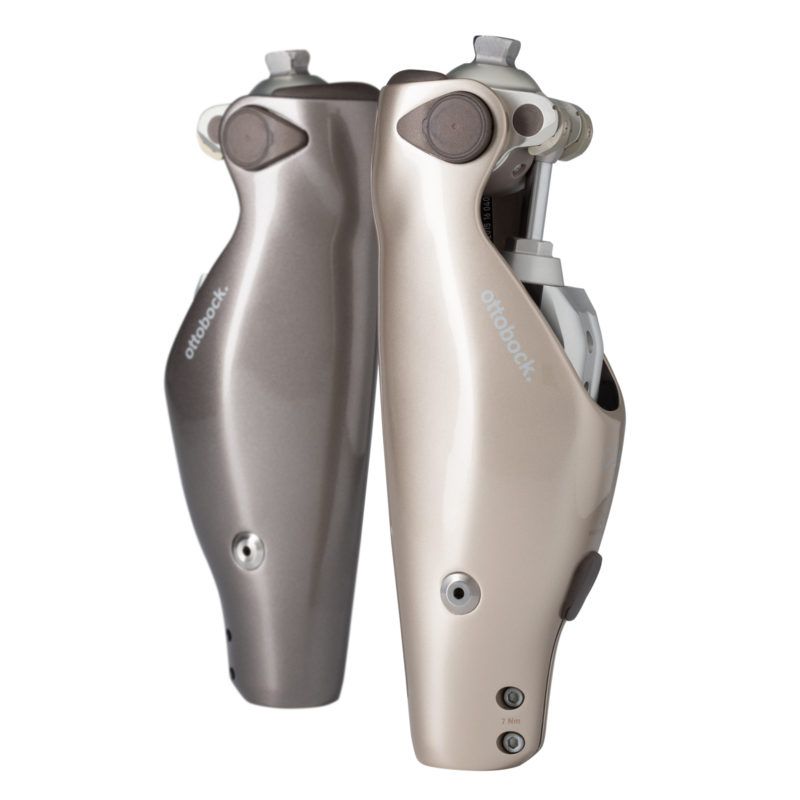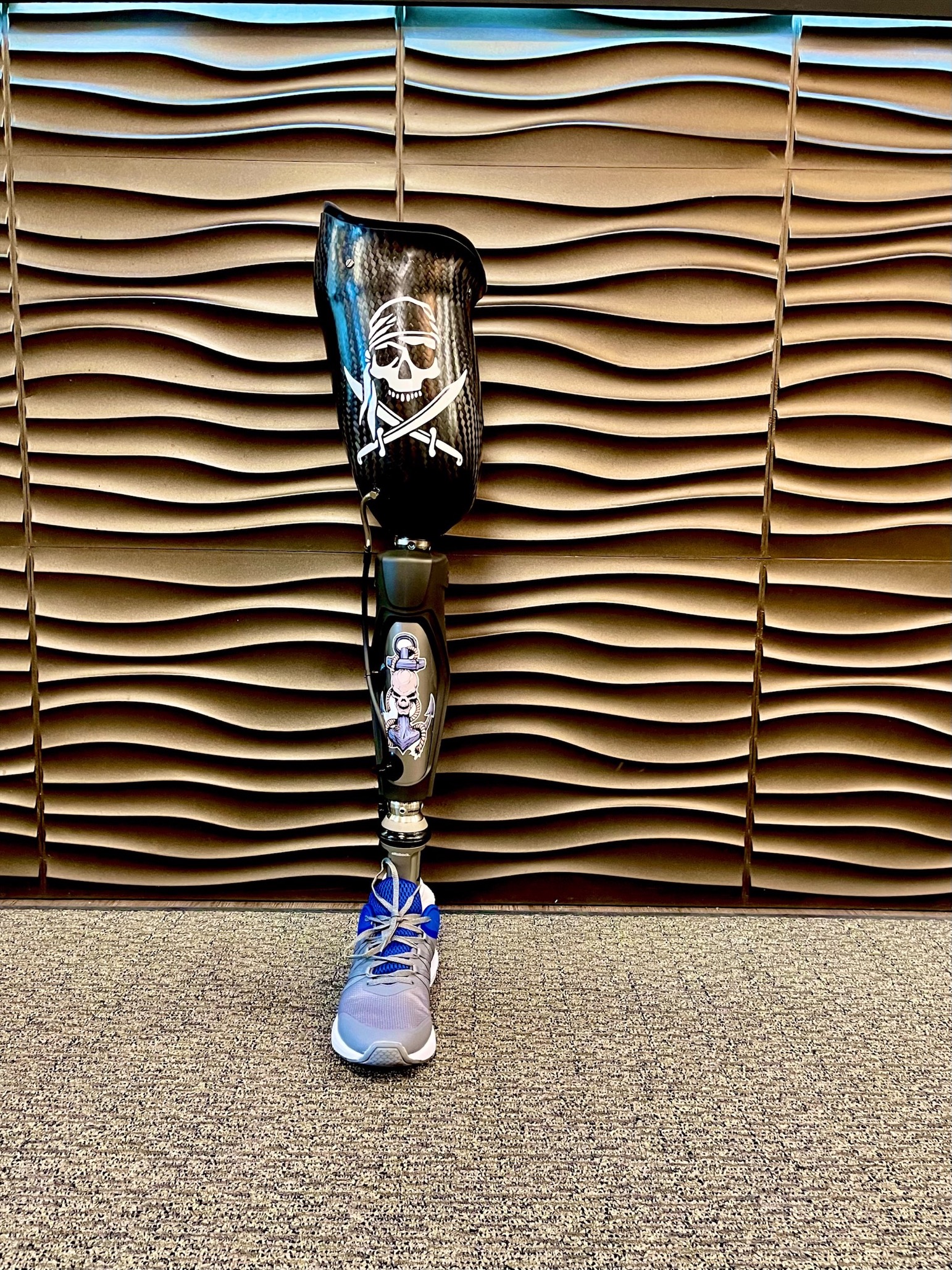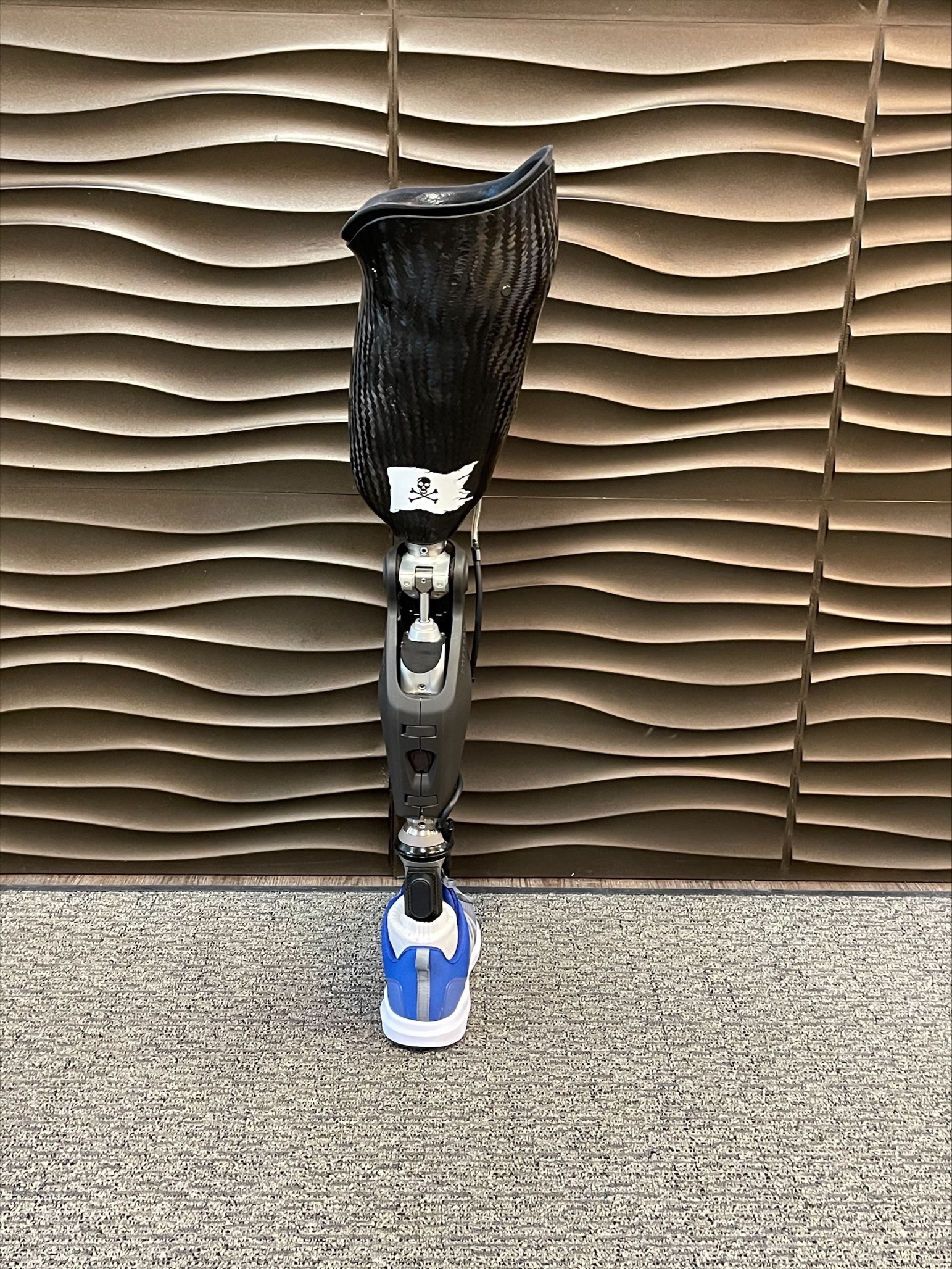Wrist Extension Orthosis
November 16, 2021 1 Comment
The custom design below is intended to help extend the wrist and provide static stretching overtime. The joint allows for adjustability to adjust the angle of the wrist as needed. This devices is designed for patient’s who present with tone, wrist flexion contractures secondary to CVA (Stroke), cerebral palsy (CP), traumatic brain injury (TBI), spinal chord injury (SCI), etc. The device is very comfortable and effective. Please call our office at (949) 699-0600 if you or a loved one is in need of a orthotic device.
El diseño personalizado esta destinado para ayudar a extender la muñeca y proporcionar estiramiento estatico. La articulacian permite la capacidad de ajuste al angulo de la muñeca segun sea necesario. Este dispositivo esta diseñado para pacientes que presentan con tono, contracturas de flexion de muñeca secundarias a ACV (Ictus), paralisis cerebral (PC), lesion cerebral traumatica (TBI), lesion medular (LME), etc. El dispositivo es muy comodo y efectivo. Llame a nuestra oficina al (949) 699-0600 si usted o un ser querido necesita un dispositivo ortopedico.

